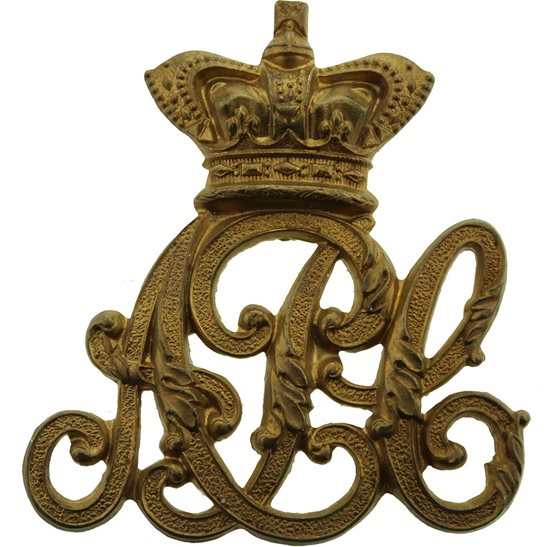Personal Details
Born: 12 September 1879 in Wrockwardine Wood, Shropshire, and baptised on 5 October the same year in Wrockwardine Parish Church.
Family: He was the son of Joseph Maddocks, a publican, and his wife Harriett. He married Nellie Mealand in 1904 in Chester, Cheshire and together they had nine children – Ethel Elizabeth, Bertram Leonard, Cecil Bertram, Edward Joseph William, John William Arthur, Joseph Mealand, Louisa Ellen Annie, Doris L M and Phyllis. Sadly, Bertram and Edward died in early infancy.
Residence: The family were living in Trench, Shropshire at the time of his baptism; in 1881 they were living at the public house at 12 Pownall Square, Liverpool, Lancashire. In 1891 he was living with his paternal grandparents at the Red Lion Inn in Tilstock village, Shropshire where his grandfather was the publican. His military discharge in 1901 was to 42 Kent Street, Fleetwood, Lancashire. In 1911 he was living at 62 Henry Place, Belfast, County Antrim, Ireland; in 1920 he lived at 32 High Street, Monks Coppenhall, Crewe, Cheshire and in 1922 he lived at 101 Claughton Avenue, Shavington, Cheshire. At the time of his death in 1950 he was living at 11 Ffordd-y-Maer, Mochdre, Colwyn Bay, North Wales.
Employment: He was a labourer in 1896 and a clerk in 1904. He served as a soldier from 1904 to 1915.
Died: 22 February 1950 in Aled, Denbighshire, aged 71.
Military Details
Regiment: Army Pay Corps (previously Cheshire Regiment)
Rank: Private
Service Number: 15029 (previously 7549)
Date of Enlistment: 17 May 1904
Date of Discharge: 29 September 1915
Reason for Discharge: Medically unfit
Other Information: He had previously served with the King’s Shropshire Light Infantry (numbers 5335 and 3643), enlisting on 27 August 1896 and discharged, medically unfit, on 24 August 1901.
Bertram was awarded the Campaign Medals (1914/15 Star, British War Medal and Victory Medal) and the Silver War Badge (number 55685).

The 1914 Star (also known as 'Pip') was authorised under Special Army Order no. 350 in November 1917 and by an Admiralty Fleet Order in 1918, for award to officers and men of the British and Indian Expeditionary Forces who served in France or Belgium between 5 August and midnight of 22–23 November 1914. The former date is the day after Britain's declaration of war against the Central Powers, and the closing date marks the end of the First Battle of Ypres.
The 1914–15 Star (also known as 'Pip') was instituted in December 1918 and was awarded to officers and men of British and Imperial forces who served against the Central European Powers in any theatre of the Great War between 5 August 1914 and 31 December 1915. The period of eligibility was prior to the introduction of the Military Service Act 1916, which instituted conscription in Britain.
The British War Medal (also known as 'Squeak') was a silver or bronze medal awarded to officers and men of the British and Imperial Forces who either entered a theatre of war or entered service overseas between 5th August 1914 and 11th November 1918 inclusive. This was later extended to services in Russia, Siberia and some other areas in 1919 and 1920. Approximately 6.5 million British War Medals were issued. Approximately 6.4 million of these were the silver versions of this medal. Around 110,000 of a bronze version were issued mainly to Chinese, Maltese and Indian Labour Corps. The front (obv or obverse) of the medal depicts the head of George V. The recipient's service number, rank, name and unit was impressed on the rim.
The Allied Victory Medal (also known as 'Wilfred') was issued by each of the allies. It was decided that each of the allies should each issue their own bronze victory medal with a similar design, similar equivalent wording and identical ribbon. The British medal was designed by W. McMillan. The front depicts a winged classical figure representing victory. Approximately 5.7 million victory medals were issued. Interestingly, eligibility for this medal was more restrictive and not everyone who received the British War Medal ('Squeak') also received the Victory Medal ('Wilfred'). However, in general, all recipients of 'Wilfred' also received 'Squeak' and all recipients of The 1914 Star or The 1914/1915 Star (also known as 'Pip') also received both 'Squeak' and 'Wilfred'. The recipient's service number, rank, name and unit was impressed on the rim.

The Silver War Badge was issued in the United Kingdom and the British Empire to service personnel who had been honourably discharged due to wounds or sickness from military service in World War I. The badge, sometimes known as the "Discharge Badge", the "Wound Badge" or "Services Rendered Badge", was first issued in September 1916, along with an official certificate of entitlement.

